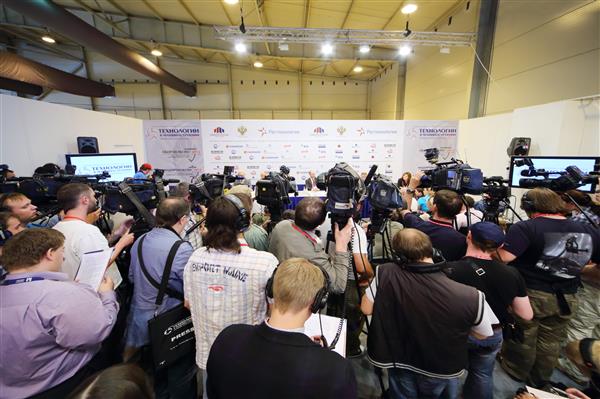
In pop culture, there is no bigger event than the San Diego Comic-Con. The four day event has grown from it’s humble beginnings in 1970 when a group of comic, sci-fi and movie fans gathered in San Diego to discuss their passions. The event now encompasses the entirety of pop culture, with big budget films, television shows, video games and more represented at the convention. More than 130,000 people attend the event this year, and as Dan Khabie, CEO of Digitari writes, they are the “harbinger of the Next Big Thing.”
Big events like Comic-Con are a huge source of real time marketing. When over 130,000 people are attending, with millions more following along on social media, a huge audience is opened up for content marketers. So how can your small staff cover such an expanse of content opportunities? We talked to Matt Heinz of Heinz Marketing for tips and tricks that will help you when digging for content gold.
Planning is Key
When going into a big event, planning is everything. To go into a big event without a plan would be like rowing a boat out to sea – without oars. But where do you even start?
“Have a sense for what your goals are,” says Heinz. “Understand who you’re targeting.” And know who’s going to be there.
Develop your coverage. Why go to the event at all? How will going to the event help your small business? Are you going to focus on content, or networking? What type of content is your target audience looking for?
Heinz recommends using an editorial calendar and doing your research beforehand to know what sessions to go to, who is speaking at those sessions and which target prospects to hit.
“Go to small topics germane to what you do,” he says. It’s an important tip, and one that could be forgotten. As a small business, you don’t have the resources available to go to every single Comic-Con panel and talk. Instead, focus on the couple of sessions that fit your business model and audience type. But don’t be afraid to be flexible – look for those serendipitous opportunities to find unique and engaging stories.
Making the Most of Your Sessions
When at the event, let social media take the lead in driving and discovering content. Make a Hootsuite list, says Heinz, and follow the hashtags and keywords associated with the event.
“Look for the prolific tweeters,” says Heinz. With a small team, you can’t cover everything. Instead, look to others at the event who are already creating content that you can use.
“People assume you have to create your own content,” says Heinz. “It’s untrue.” He recommends finding people and asking them if you can use what they create.
For example, at a Dreamforce event a couple years ago, Heinz noticed a woman who kept producing great content on Twitter using the conference’s hashtag. “I approached her,” he said, “and asked her if I could use her tweets on my blog.” She guest wrote a wrap-up takeaway blog post afterwards, using her past tweets and content that she created during the event.
6 tips for success at Dreamforce 2014 | Resource management software from Precursive: http://t.co/oyE1qwvEBn
— Liliana Osorio (@ly_osorio) July 28, 2014
Collaboration Leads to Success
Curation is an effective tool, and, says Heinz, is the “key to leveraging a small team to create good content.”
Use Twitter to gather relevant tweets about your event and post a round-up of takeaways, or create a Rock Content stream and import the tweets. Create partnerships and host other’s event content on your website. Ask prolific event tweeters if they could write a guest post on your blog. These ideas will help alleviate stresses on a small team with limited resources.
One of Heinz’s most engaged piece of content involved leveraging LittleBird, a tool that allows users to find top influencers on Twitter. He used the tool in combination with the hashtag and found a list of the top 50 most influential people at Dreamforce 2013.
“It got a lot of engagement and retweets,” says Heinz. “People were commenting, ‘Why isn’t so and so on the list!’”
This type of content around an event takes little time but creates great engagement.
“Leaders are interested in good content,” says Heinz, “not sources of content.”
Think Beyond the Event
Heinz Marketing posted a blog post in the lead up to a San Francisco Conference on the best places to eat and drink. Originally posted in October 2013, the article is still getting retweets and shares from people going to conferences completely unrelated to Heinz Marketing, says Heinz.
“There’s value in thinking beyond the event.”
Search for ways to create unique content that exists outside of your event. These type of posts are quick, easy and create a ton of outside, lasting engagement.
Takeaways
Plan plan plan – heading into an event with a plan is the best way to guarantee success. Heinz has three things to think about when planning:
1. Who’s going to be at the event?
2. What is your content going to look like?
3. Make sure it’s a good mixture of business and fun – network and get in contact with other people.
Collaborate for success – a small team can’t cover everything. Make connections with other people at the event and leverage their skills and content to make the most of your time.
Finally, think beyond the event. Create content that exists outside of the event and has significant lasting power.
Be sure to follow Scribble Engage on Twitter to learn more about real time content marketing. Click here to see how Rock Content’s content engagement platform can help your company achieve its business goals.






